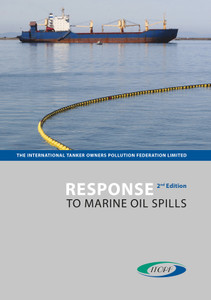
This publication is a guide to oil spill response in fast water environments.
This guide to oil spill response in fast currents concentrates specifically on response strategies, containment and clean-up measures. It provides information on the considerations and strategies required for pollution response and topics covered include safety, calculations, equipment selection and special conditions.
Foreword
This publication was prepared by the OPRC-HNS Technical Group, a subsidiary body of IMO’s Marine Environment Protection Committee. It was approved by the Marine Environment Protection Committee at its sixty-third session in 2012.
Whilst an abundance of information exists for oil spill response in open water and along coastlines, undertaking response operations in fast moving waterways, such as rivers and other inland waters, requires a different approach for which much less information is available.
With a view to addressing this gap and providing complementary information to existing oil pollution response literature, such as that contained in other IMO manuals, in particular, the Manual on Oil Pollution, Section IV – Combating Oil Spills, this publication, the Guideline on oil spill response in fast currents was developed.
The aim of this Guideline is to provide essential information and a practical aid to oil spill response personnel for the development of response strategies and for the implementation of oil spill containment and clean-up measures in a fast water environment. It is intended for personnel who already have an understanding of the basics of oil containment and recovery using conventional spill response equipment, such as booms and skimmers, and provide information on the particular considerations and strategies that are required for pollution response in fast currents.
Foreword
1. Introduction
2. Basics of working in fast currents
3. Hydrodynamic considerations
4. Decision guide
5. Safety
6. Tactics
7. Calculations
8. Equipment selection
9. Special conditions
10. References
11. Glossary
IMO
As a specialised agency of the United Nations, IMO is the global standard-setting authority for the safety, security and environmental performance of international shipping. Its main role is to create a regulatory framework for the shipping industry that is fair and effective, universally adopted and universally implemented.
In other words, its role is to create a level playing-field so that ship operators cannot address their financial issues by simply cutting corners and compromising on safety, security and environmental performance. This approach also encourages innovation and efficiency.
Shipping is a truly international industry, and it can only operate effectively if the regulations and standards are themselves agreed, adopted and implemented on an international basis. And IMO is the forum at which this process takes place.
- Number of Pages:
- 50
- ISBN:
- 9789280115673
- Book Height:
- 210 mm
- Book Width:
- 150 mm
- Author:
International Maritime Organization
- Published Date:
- November 2013
- Binding Format:
- Paperback
- Preview:
- Yes
- Publication Date:
- November 2013





